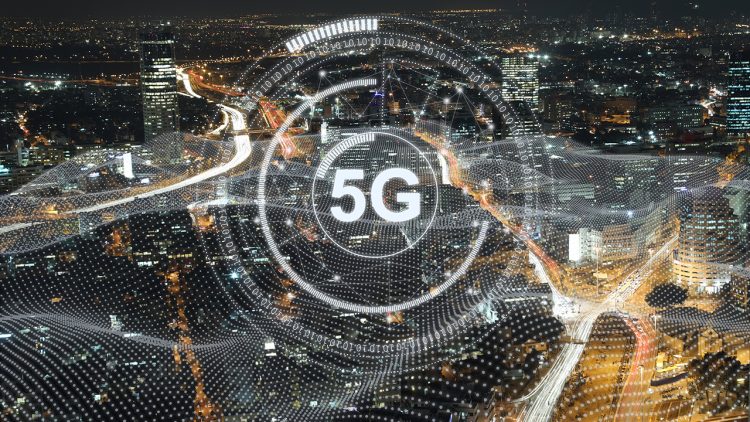Introduction
The rollout of 5G networks is set to revolutionize the way we communicate, interact, and innovate. Promising unprecedented speeds, ultra-low latency, and massive connectivity, 5G is poised to support a range of groundbreaking applications, from autonomous vehicles to smart cities and advanced healthcare systems. However, with these advancements come new and more complex security risks that must be addressed to ensure the integrity, privacy, and safety of users, organizations, and nations.
The growing reliance on 5G technology means that securing the infrastructure, data, and communication channels within these networks is of paramount importance. A compromise in the security of 5G networks could lead to devastating consequences, from data breaches to disruptions in critical services. As such, governments, telecom operators, and international bodies must work together to establish comprehensive security measures and regulatory frameworks that address these emerging threats.
This article examines the various security challenges associated with 5G networks and proposes regulatory measures that must be put in place to safeguard against potential risks. It also explores the role of different stakeholders in developing a robust security ecosystem for 5G.
1. Overview of 5G Network Architecture and Associated Security Risks
a. Understanding 5G Architecture
5G networks introduce a radical departure from previous generations of mobile networks. Key components of the 5G architecture include:
- 5G Radio Access Network (RAN): The radio access network in 5G is the interface between devices and the core network. It operates across multiple frequency bands and utilizes technologies like massive MIMO and beamforming to optimize coverage and data transfer speeds.
- 5G Core (5GC): The core network is the backbone of 5G, responsible for managing all data traffic, routing, and supporting critical services like network slicing and edge computing.
- Edge Computing: The use of edge computing in 5G brings data processing closer to the user, reducing latency and enabling real-time services.
- Network Slicing: 5G introduces the ability to create virtual networks tailored for specific applications, such as low-latency services for autonomous vehicles or high-bandwidth networks for streaming media.
While these advanced technologies promise improved performance, they also introduce new vulnerabilities. The decentralization of the 5G architecture, along with the introduction of network slicing and edge computing, increases the attack surface for malicious actors.
b. Security Risks of 5G Networks
- Expanded Attack Surface:
The complexity and scale of 5G networks introduce numerous potential entry points for cyberattacks. The integration of IoT devices and edge computing expands the attack surface, making it easier for adversaries to breach systems. - Supply Chain Risks:
5G infrastructure depends on hardware and software from a vast array of suppliers, creating potential vulnerabilities within the supply chain. Compromised hardware components or unpatched software can be exploited by attackers. - Insider Threats:
Given the large-scale deployment of 5G networks, there is an increased risk of insider threats. Malicious actors within organizations, or even careless employees, can exploit access to the network for malicious purposes. - Interoperability Challenges:
The integration of legacy systems with 5G infrastructure presents additional risks. As 5G networks rely on both old and new technologies, ensuring their compatibility while maintaining robust security is a significant challenge. - Cyber Espionage and Data Breaches:
The massive amounts of data transmitted across 5G networks increase the risk of data breaches. Personal data, industrial secrets, and government communications could be intercepted or stolen by cybercriminals or state-sponsored actors.
2. Key Cybersecurity Threats to 5G Networks
The security challenges associated with 5G networks are diverse, and addressing them requires a comprehensive understanding of the specific threats involved:
a. Distributed Denial of Service (DDoS) Attacks
A primary cybersecurity threat to 5G networks is the risk of DDoS attacks, which overwhelm network infrastructure with traffic, causing services to become unavailable. These attacks can target critical network components, leading to disruptions in services that rely on real-time communication, such as emergency services or autonomous vehicles.
- Example: A successful DDoS attack on a telecom provider could disrupt 5G services, affecting millions of users and critical infrastructure. As more industries become reliant on 5G, the consequences of such disruptions could be catastrophic.
b. Data Privacy and Breaches
With the growing number of connected devices and the vast quantities of personal and business data flowing through 5G networks, the risk of data breaches is heightened. Sensitive information, from private medical records to financial data, is transmitted over the network, making it a prime target for attackers.
- Example: If malicious actors intercept personal health data transmitted via 5G networks, they could exploit it for identity theft or sell it on the dark web, leading to severe privacy violations.
c. Malware and Ransomware Attacks
As the number of connected devices and IoT applications increases, malware and ransomware attacks targeting 5G-enabled devices and infrastructure become more common. These attacks could cripple entire networks, lock out users, or disrupt critical services.
- Example: A ransomware attack on the network infrastructure could paralyze 5G services, making devices and critical systems inoperable unless a ransom is paid.
d. Supply Chain Attacks
5G networks depend on a global supply chain for hardware and software components. Cyberattacks targeting suppliers could compromise the security of network infrastructure, introducing backdoors or vulnerabilities that are difficult to detect.
- Example: A compromised hardware component from a supplier could allow an attacker to infiltrate the network and gain access to sensitive communications or data.

3. Regulatory Measures for Securing 5G Networks
Given the critical importance of 5G networks in modern economies and societies, the implementation of robust regulatory measures is essential. These regulations must address both security and privacy, ensuring that 5G networks are safe, resilient, and trustworthy. Below are several key regulatory measures that must be enacted:
a. National and International Cybersecurity Standards
Governments must establish national cybersecurity standards tailored to 5G networks. These standards should specify requirements for securing network infrastructure, data transmission, and connected devices.
- Example: In the United States, the Federal Communications Commission (FCC) has established cybersecurity frameworks for telecommunications providers, requiring them to implement strong security practices for 5G networks. Similar standards should be adopted globally to ensure consistent and comprehensive security.
b. Vendor Risk Management and Supply Chain Security
Given the risks posed by the global supply chain for 5G components, governments must require telecom operators to conduct thorough risk assessments of vendors and suppliers. They should implement vendor management programs to ensure that all components, from hardware to software, meet stringent security requirements.
- Example: The European Union has introduced regulations requiring telecom providers to ensure that 5G infrastructure suppliers meet specific security criteria, particularly focusing on high-risk suppliers from countries with questionable cybersecurity practices.
c. Privacy Protection and Data Encryption
Data privacy should be a cornerstone of 5G regulatory frameworks. Governments must enforce data protection regulations to ensure that user data transmitted over 5G networks is securely encrypted and that privacy is upheld across all applications.
- Example: The General Data Protection Regulation (GDPR) in the EU is a model for data privacy standards. Similar regulations should be applied to 5G networks to ensure that user data is adequately protected.
d. Incident Reporting and Incident Response Mechanisms
Regulatory bodies should establish mandatory incident reporting frameworks, requiring telecom operators to report any security breaches or attacks on 5G networks within a defined timeframe. Additionally, a response and recovery plan should be mandated to minimize the impact of security incidents.
- Example: The Cybersecurity and Infrastructure Security Agency (CISA) in the U.S. provides a reporting mechanism for critical infrastructure. Similar agencies should be empowered to handle 5G network security incidents.
e. International Cooperation and Standardization
5G networks operate across borders, and as such, cybersecurity regulations must be harmonized internationally. Governments must work together through organizations like the International Telecommunication Union (ITU) to create global standards for securing 5G networks.
- Example: International cooperation through the Global Forum on Cybersecurity can facilitate the exchange of threat intelligence and best practices for securing 5G networks across different countries.
4. Overcoming Challenges in 5G Security and Regulation
While the need for comprehensive 5G security and regulation is clear, several challenges must be addressed:
a. Rapid Technological Evolution
The rapid pace of technological advancement in the 5G space means that regulatory frameworks must be adaptive and evolve quickly to address new risks and threats. This requires continuous collaboration between regulators and technology experts.
b. Political and Geopolitical Considerations
The political landscape surrounding 5G is complex, particularly when it comes to issues like vendor security and national security concerns. Countries may prioritize different security requirements based on geopolitical interests, complicating international cooperation.
c. Resource Constraints in Developing Countries
Developing countries may face challenges in implementing robust 5G security measures due to financial and technical resource constraints. International aid, partnerships, and technical support will be necessary to ensure these nations are not left behind in the global 5G rollout.
Conclusion
As 5G technology continues to expand globally, ensuring the security and integrity of these networks is essential. The complexity of 5G networks, combined with the increasing number of devices and applications connected to them, creates new vulnerabilities that must be addressed through robust security protocols and comprehensive regulatory measures.
Governments, telecom operators, international bodies, and stakeholders from all sectors must collaborate to develop and enforce security standards that protect against cyberattacks, privacy violations, and other threats. Only through coordinated efforts can the global 5G infrastructure be secured, ensuring that its potential is realized without compromising safety and security.

















































